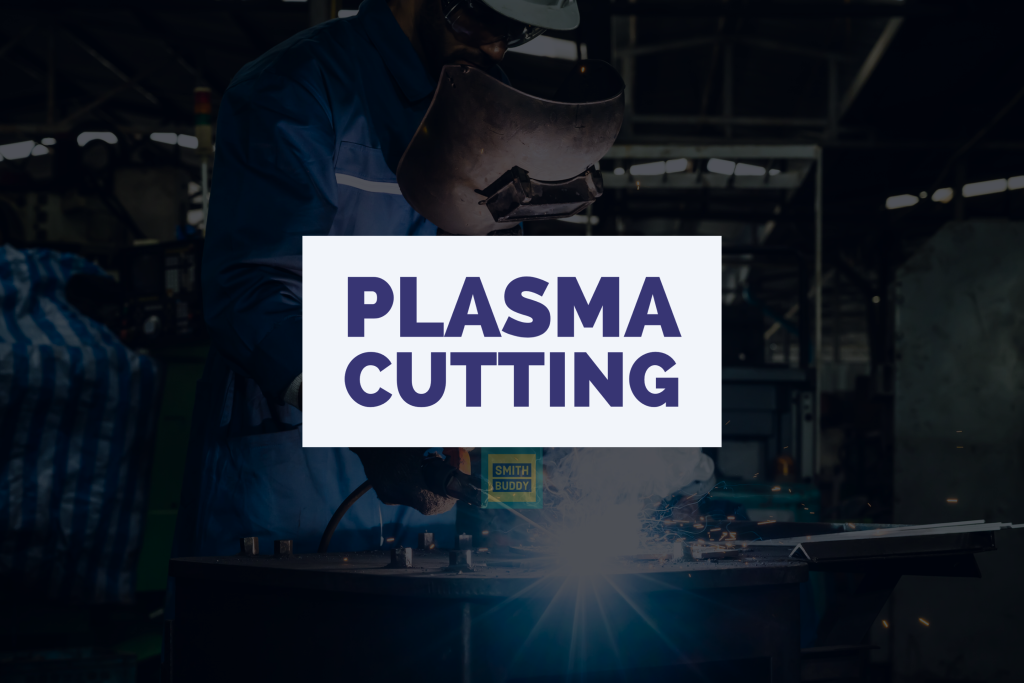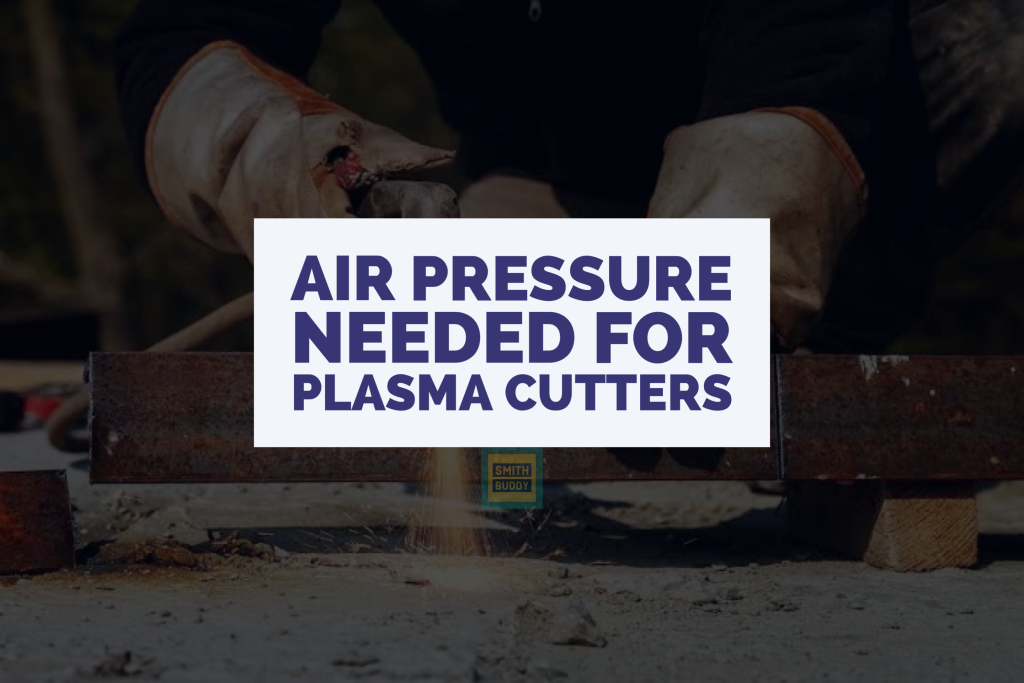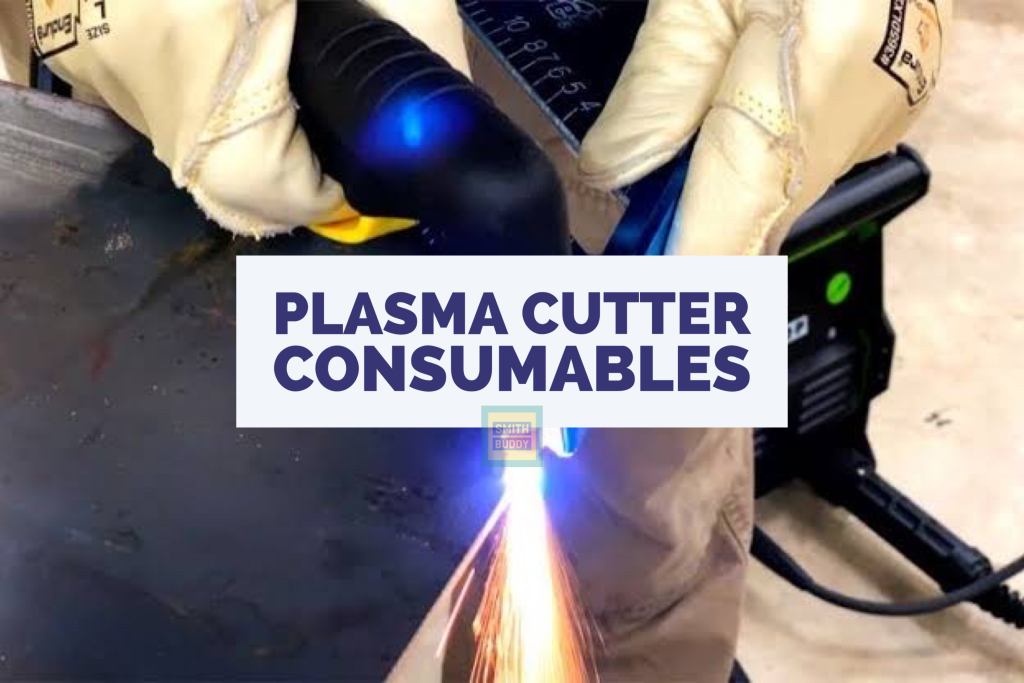Plasma cutting and waterjet cutting are two advanced cutting technologies that offer unique benefits and capabilities, catering to a diverse range of industries and applications. As industries evolve and materials become more complex, understanding the fundamental differences between these cutting methods is crucial in determining the most suitable choice for a given project.
Plasma cutting, primarily designed for cutting conductive materials at high speeds, excels in industries such as automotive, construction, and manufacturing. In contrast, waterjet cutting, with its versatile ability to cut through a wide array of materials without heat generation, is ideal for aerospace, electronics, and other industries that require precision and minimal thermal distortion.
Before jumping into the main part – Let’s have a look at the best plasma cutters that come with built-in air compressors.
By comparing these techniques, we can better appreciate their individual strengths and limitations, enabling us to make informed decisions based on specific project requirements and desired outcomes.
Plasma Cutting Vs Waterjet Cutting
Plasma Cutting and Waterjet Cutting are two popular cutting techniques used in various industries for different materials. Here, we illustrate the differences between the two methods in terms of their working principles, applications, advantages, and disadvantages.
Working Principle
- Plasma Cutting: Plasma cutting uses a high-velocity jet of ionized gas, or plasma, to conduct electricity from the torch to the workpiece. The plasma heats the material, melting it and blowing the molten metal away, thus cutting through it.
- Waterjet Cutting: Waterjet cutting uses a high-pressure stream of water, sometimes mixed with abrasive particles like garnet, to cut through materials. The waterjet erodes the material, creating a clean and precise cut.
Applications
- Plasma Cutting: This method is primarily used for cutting conductive materials, such as steel, stainless steel, aluminum, brass, and copper. It is commonly employed in the automotive, construction, and manufacturing industries.
- Waterjet Cutting: Waterjet cutting is versatile and can cut a wide range of materials, including metal, stone, glass, plastic, rubber, and foam. It is used in industries like aerospace, automotive, construction, and electronics.
Advantages
- Plasma Cutting:
- Faster cutting speed, especially for thicker conductive materials.
- Lower initial equipment costs compared to waterjet cutting.
- Capability to cut a wider range of metal thicknesses.
- Waterjet Cutting:
- No heat-affected zone, which eliminates thermal distortion and prevents material from warping.
- Can cut a broader variety of materials, including non-conductive and heat-sensitive materials.
- Produces clean, precise cuts with minimal burr.
Disadvantages
- Plasma Cutting:
- Limited to conductive materials.
- Generates heat-affected zone, which may cause thermal distortion or hardening of the material.
- Less precise and less clean cuts compared to waterjet cutting.
- Waterjet Cutting:
- Slower cutting speed compared to plasma cutting, particularly for thicker materials.
- Higher initial equipment and operational costs due to the use of abrasives and high-pressure pumps.
- Generates more waste, especially when using abrasives.
Examples
- Plasma Cutting:
- Cutting steel plates for constructing bridges and buildings.
- Fabricating automotive parts like exhaust systems or chassis components.
- Producing metal art and sculptures.
- Waterjet Cutting:
- Cutting aerospace components made from heat-sensitive materials like titanium and composites.
- Creating intricate designs in stone or glass for architectural applications.
- Cutting and shaping rubber gaskets or foam inserts for packaging.
In summary, plasma cutting is better suited for cutting conductive materials at a faster rate, while waterjet cutting provides a more versatile and precise cutting option for a wide range of materials, including heat-sensitive and non-conductive materials. The choice between the two methods depends on the specific requirements of a project, including material type, desired precision, and budget constraints.
Key Technical Differences
The key technical differences between plasma cutters and waterjet cutters can be outlined in terms of their cutting mechanism, power source, materials they can cut, and precision levels. Here is a detailed comparison of these differences:
Cutting Mechanism
- Plasma Cutters: These devices utilize an electrically conductive gas, known as plasma, to transfer energy from the plasma cutter to the workpiece. The high-velocity plasma jet heats the material, causing it to melt and be blown away, thus creating a cut.
- Waterjet Cutters: Waterjet cutting machines rely on a high-pressure stream of water, often mixed with abrasive particles, to erode the material being cut. The waterjet nozzle focuses the stream on the workpiece, allowing it to penetrate and cut the material with precision.
Power Source
- Plasma Cutters: Plasma cutting systems typically require a combination of a power supply, which provides the necessary electrical energy, and a compressed gas source, such as air or nitrogen, to create the plasma jet.
- Waterjet Cutters: These machines use a high-pressure pump to generate the waterjet stream. The pump pressurizes water up to 60,000 psi or more. In abrasive waterjet cutting, an abrasive feed system is also used to introduce abrasive particles into the water stream.
Materials
- Plasma Cutters: Plasma cutters are best suited for cutting electrically conductive materials such as steel, stainless steel, aluminum, brass, and copper. They are not suitable for non-conductive or heat-sensitive materials.
- Waterjet Cutters: Waterjet cutting systems can handle a wide range of materials, including metals, glass, stone, ceramics, plastics, rubber, and composites. They can cut both conductive and non-conductive materials, as well as heat-sensitive materials without damaging them.
Precision & Cut Quality
- Plasma Cutters: Plasma cutting offers good precision, but it generally produces a wider kerf (cut width) and a heat-affected zone (HAZ) compared to waterjet cutting. The HAZ can cause material distortion or hardening, leading to lower cut quality.
- Waterjet Cutters: Waterjet cutting provides higher precision and a narrower kerf than plasma cutting. It does not produce a heat-affected zone, which means no thermal distortion and a cleaner, smoother cut.
The key technical differences between plasma cutters and waterjet cutters lie in their cutting mechanisms, power sources, the range of materials they can cut, and the precision and quality of the cuts they produce. These differences make each cutting method better suited to specific applications, depending on the material type, desired precision, and other project requirements.
Comparison and Case Study
Noise generation is an important consideration in the manufacturing environment, as it impacts worker comfort, safety, and overall productivity. Both plasma cutters and waterjet cutters produce noise during operation, but the levels and characteristics of the noise differ significantly. In this case study, we’ll compare the noise generated by plasma cutters and waterjet cutters in a typical industrial setting.
Noise levels in plasma cutting
Plasma cutting generates noise mainly due to the high-velocity ionized gas jet and the material being cut. The noise levels can vary based on factors such as the cutting amperage, material type, and thickness, and the surrounding environment. In general, plasma cutting noise levels range from 85 to 100 decibels (dB) or higher, depending on the equipment and cutting conditions.
Noise levels in waterjet cutting
Waterjet cutting produces noise primarily due to the high-pressure water stream, which can create significant noise as it impacts the material and the cutting table. Abrasive waterjet cutting, in particular, can generate additional noise due to the mixing and acceleration of abrasive particles. Typical noise levels for waterjet cutting range from 80 to 95 dB, depending on factors such as water pressure, cutting head type, and the presence of noise reduction measures.
Case Study
In a manufacturing facility utilizing both plasma cutting and waterjet cutting equipment, a series of noise measurements were taken to compare the noise levels produced by each cutting method. The plasma cutter was cutting 1/2-inch thick steel plates, while the waterjet cutter was processing 1/2-inch thick aluminum plates.
The average noise levels measured at the operator’s position were as follows:
- Plasma cutting: 95 dB
- Waterjet cutting: 87 dB
Although both cutting methods produced noise levels above the typical conversation level (around 60 dB), the plasma cutting process was noticeably louder than the waterjet cutting process.
In addition to the overall noise level, the characteristics of the noise generated by each method were also different. The plasma cutting noise was more continuous and high-pitched, while the waterjet cutting noise had a lower frequency and was more intermittent.
Noise reduction strategies
Given the noise levels generated by both cutting methods, it is essential to implement noise reduction strategies to minimize the impact on worker comfort and safety. Some possible solutions include:
- Installing sound barriers or acoustic enclosures around cutting equipment
- Using personal protective equipment (PPE), such as earmuffs or earplugs
- Implementing engineering controls, such as noise dampening materials or low-noise cutting heads
- Scheduling cutting tasks during periods of lower overall facility noise levels
In conclusion, this case study demonstrates that plasma cutting generally generates higher noise levels compared to waterjet cutting. The noise characteristics also differ between the two methods, with plasma cutting producing a more continuous and high-pitched noise. It is essential for manufacturers to consider noise levels and characteristics when selecting cutting equipment and to implement appropriate noise reduction strategies to ensure a safe and comfortable working environment.
Frequently Asked Questions
Here are some frequently asked questions (FAQs) about the differences between plasma cutting and waterjet cutting, along with their answers:
Which method is faster: plasma cutting or waterjet cutting?
Plasma cutting is generally faster than waterjet cutting, particularly when cutting conductive materials like steel, stainless steel, aluminum, brass, and copper. However, the cutting speed advantage of plasma cutting decreases as the material thickness increases.
Which method is more accurate and produces cleaner cuts?
Waterjet cutting offers higher precision and cleaner cuts compared to plasma cutting. Waterjet cutting does not produce a heat-affected zone (HAZ), which minimizes thermal distortion and ensures a smoother cut with minimal burr.
Can both methods cut non-conductive materials?
Plasma cutting is limited to cutting conductive materials, while waterjet cutting can cut both conductive and non-conductive materials, including metals, glass, stone, ceramics, plastics, rubber, and composites.
Is plasma cutting cheaper than waterjet cutting?
In terms of initial equipment costs, plasma cutting systems are generally less expensive than waterjet cutting systems. However, waterjet cutting may offer lower operating costs, depending on factors such as material type, cutting speed, and waste management.
How do the environmental impacts of plasma cutting and waterjet cutting compare?
Plasma cutting generates heat, noise, and fumes, which can be harmful to the environment and require proper ventilation and safety measures. Waterjet cutting is considered more environmentally friendly, as it produces little to no heat and fumes. However, waterjet cutting can generate more waste, particularly when using abrasives, which may require proper disposal.
Which method is better for cutting heat-sensitive materials?
Waterjet cutting is the preferred choice for cutting heat-sensitive materials, as it does not generate heat during the cutting process, eliminating the risk of thermal distortion or damage to the material.
Can I cut thick materials with both plasma and waterjet cutting?
Both plasma and waterjet cutting can handle thick materials; however, the cutting speed and quality may vary depending on the thickness and material type. Plasma cutting can cut thicker conductive materials more quickly, but the cut quality may be lower than that of waterjet cutting, particularly for very thick materials. Waterjet cutting can produce high-quality cuts on thick materials but may take longer to complete the cut.
Conclusion
In conclusion, plasma cutting and waterjet cutting are two distinct cutting technologies, each with its own set of advantages and limitations. Plasma cutting excels in cutting conductive materials at high speeds and is commonly employed in industries such as automotive, construction, and manufacturing. Waterjet cutting, on the other hand, offers a more versatile and precise cutting solution for a broader array of materials, including heat-sensitive and non-conductive materials, making it ideal for industries like aerospace and electronics. When choosing between these two cutting methods, it is essential to consider factors such as material type, desired cut quality, budget constraints, and project requirements. Ultimately, understanding the key differences between plasma and waterjet cutting will enable businesses and individuals to make informed decisions, ensuring the best possible outcome for their specific cutting needs.





